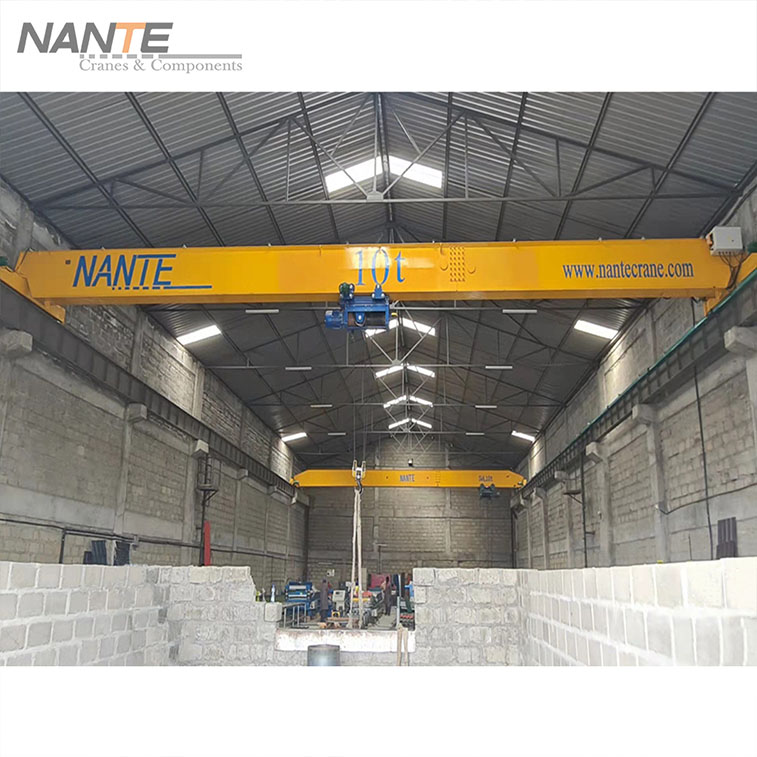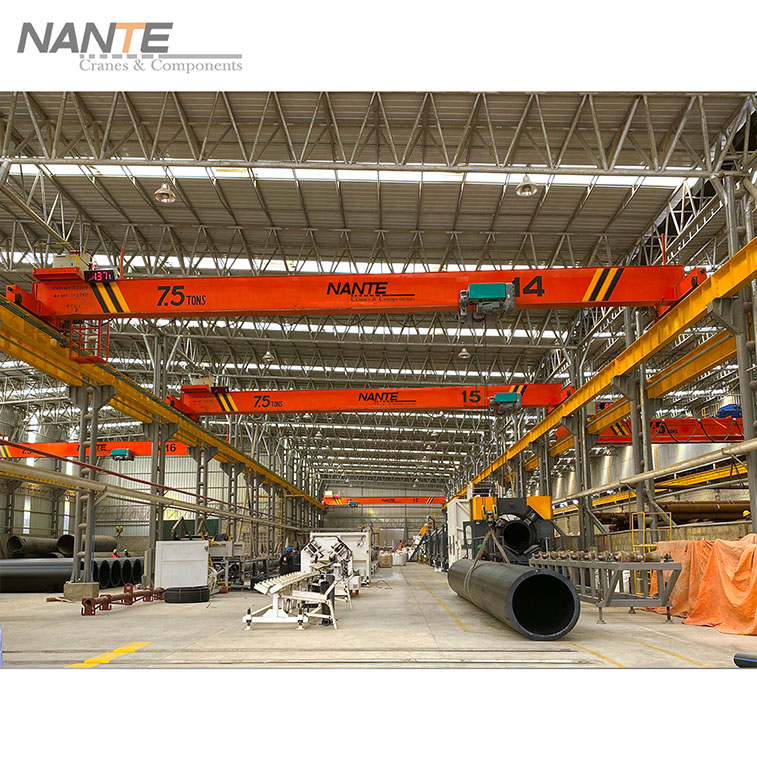How to Choose the Right Single Girder Overhead Traveling Crane
Date: 2024-03-15 Share:
An overhead traveling crane, specifically a single girder variety, is an essential component in industrial manufacturing processes, warehouse operation, and logistical activities. Nevertheless, there exists an extensive variety of such cranes available in the market today; each varying significantly in function and performance level. Selecting the most suitable type of single girder overhead traveling crane can be a daunting task. This document aims to guide you through this process by providing insightful suggestions derived from various pertinent aspects.

Clearly define the use of demand and crane performance
Define the usage requirements
It is important to define application requirements. For example, the weight, size, and shape of the lifts, as well as the frequency and height of the lifts. This information will directly determine the key parameters such as lifting capacity, span, lifting height, and hook type of the required crane. At the same time, the operating environment of the crane, such as indoor or outdoor, temperature, humidity, and other factors should also be considered to ensure that the selected crane is adaptable to actual working conditions.
Clarifying the usage requirements not only helps to determine the specific specifications and functions of the required crane but also ensures the efficiency and safety of the selected equipment in actual application. Below are a few key steps and points that we hope will help you make a more informed decision.
Analyze the workload:
The first step is to determine the maximum weight of the items to be lifted. This will directly determine the lifting capacity of the crane. Then, knowing the size and shape of the item will help you choose the proper hook and lifting method. You will also want to consider the frequency of lifting, i.e. how many hours a day or week the crane will need to work. This will affect the durability and maintenance needs of the crane.
Consider the working environment:
Different environments have different requirements for cranes. For example, the level of protection, corrosion resistance, etc. Extreme environmental conditions of temperature and humidity may affect the performance and lifespan of the crane. There are also questions about the amount of space in the workplace, especially the span, height, and rail length of the crane. Such factors should also be considered.
Safety considerations:
The first thing to look at is whether the crane meets local and international safety standards. The next thing to consider is the crane’s safety features, such as overload protection and limit switches.
Operation and Maintenance:
Depending on the skills and experience of your operator, choose a crane that is easy to operate and maintain. Understand the maintenance intervals and costs of the crane to ensure long-term economy.
Future expandability:
With the continuous expansion of production scale and technological advancement, higher requirements may be placed on the crane’s lifting capacity, span, and other parameters in the future. Therefore, when choosing a single girder overhead crane, its expandability and upgradability should be considered. Some brands of cranes support modular design, which can be expanded and upgraded as needed to better meet future production requirements.
Understanding crane performance
When choosing a single girder overhead crane, you should have an in-depth understanding of its performance. This includes the structure of the crane, transmission mode, control system, safety protection devices, and other aspects. The performance of the crane directly determines its working efficiency, safety, and service life. In addition, the control system of the crane is also very important, which determines the ease of operation and precision of the crane. Safety protection devices, on the other hand, can ensure the safe operation of cranes and reduce the possibility of accidents.
By gaining a deeper understanding of the performance of cranes, you can make a more informed choice based on your needs and budget. At the same time, communicate with professional crane suppliers or manufacturers to obtain more detailed technical specifications and usage recommendations to ensure that the selected equipment can meet your actual requirements. We recommend you choose Nante’s single-girder overhead cranes. Nante single girder overhead traveling cranes are designed and manufactured in strict accordance with international design standards (e.g. FEM, CMAA, EN ISO) to ensure a high degree of safety and reliability.
Refer to professional advice
Take expert advice when choosing a girder overhead traveling crane. These professionals usually have rich industry experience and professional knowledge and can recommend the right crane brand and model for you according to your actual needs and budget at the same time they can also give you professional guidance on cranes for installation, operation, and maintenance. If you have any questions about single-girder overhead cranes, don’t hesitate to contact us.

Considering the price/performance ratio
Cost is an important consideration when choosing a girder overhead crane. Crane models and models vary widely in price, so you need to choose the right product according to your budget. However, price is not the only criterion, factors such as the crane’s performance, quality, after-sales service, etc. should also be considered. This will ensure that you buy a cost single girder overhead crane study.
Concerned about after-sales service
After the purchase of single girder overhead cranes, after-sales service is also a very important aspect. Good after-sales service can ensure that the crane can get timely and professional repair and maintenance when it breaks down in the process of use, so as to prolong the service life of the crane and keep its performance stable. Therefore, when choosing a crane, you should understand and evaluate its after-sales service, and choose brands and manufacturers with good after-sales service.
Conclusion
In summary, selecting a single girder suitable for an overhead crane requires consideration of several factors such as application requirements, crane performance, comparison of materials and designs, flexibility and how reproducibility, professional advice, costs, and after-sales service. Giving great consideration to these factors, and buying a high-performance girder overhead travel crane at a reasonable price and in accordance with actual needs, which will provide in-depth support den for your company’s operations and improvements including routine maintenance and service to ensure stable, safe and reliable crane operation with operating procedures.
 English
English






